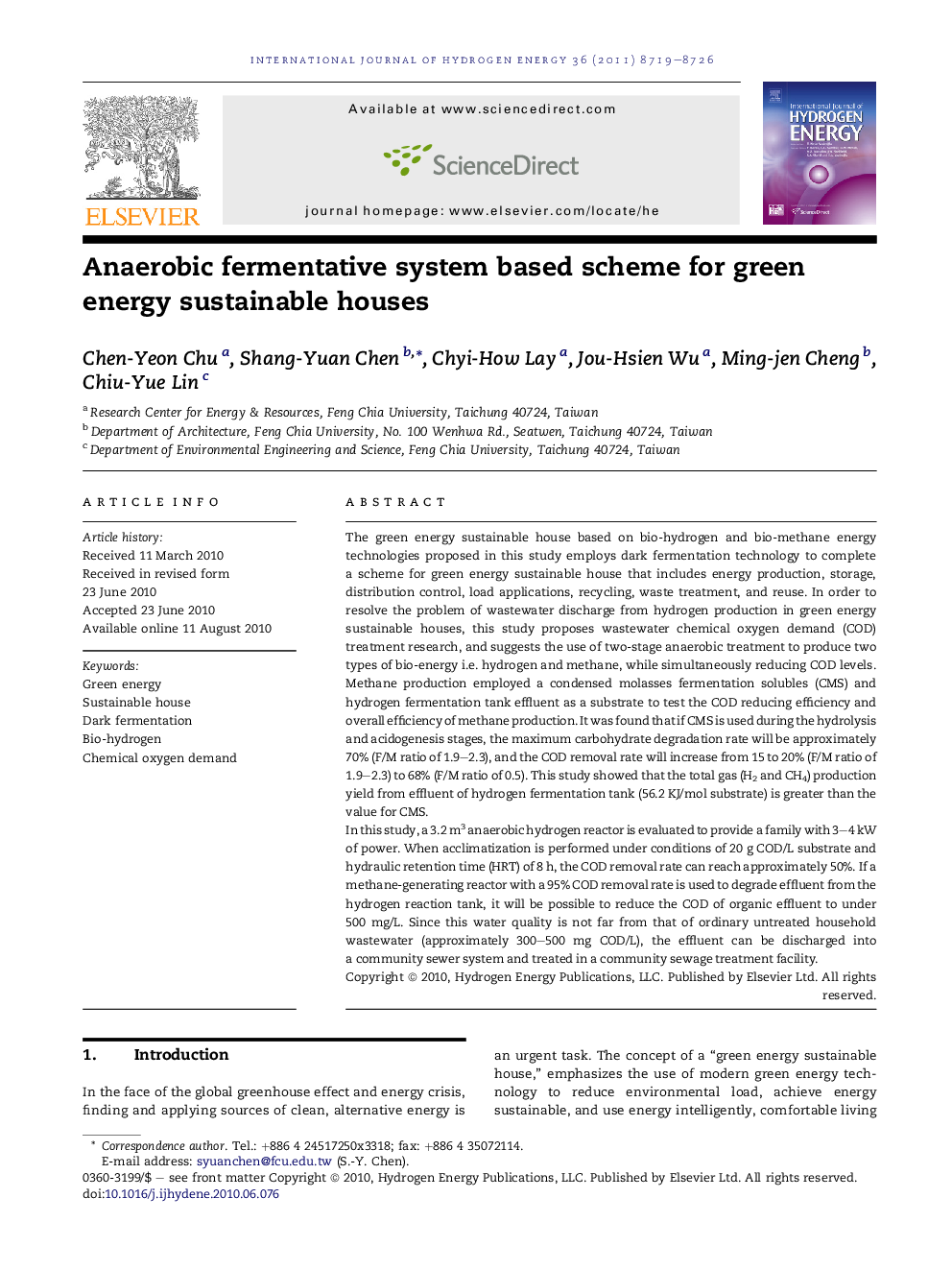| Article ID | Journal | Published Year | Pages | File Type |
|---|---|---|---|---|
| 1279192 | International Journal of Hydrogen Energy | 2011 | 8 Pages |
The green energy sustainable house based on bio-hydrogen and bio-methane energy technologies proposed in this study employs dark fermentation technology to complete a scheme for green energy sustainable house that includes energy production, storage, distribution control, load applications, recycling, waste treatment, and reuse. In order to resolve the problem of wastewater discharge from hydrogen production in green energy sustainable houses, this study proposes wastewater chemical oxygen demand (COD) treatment research, and suggests the use of two-stage anaerobic treatment to produce two types of bio-energy i.e. hydrogen and methane, while simultaneously reducing COD levels.Methane production employed a condensed molasses fermentation solubles (CMS) and hydrogen fermentation tank effluent as a substrate to test the COD reducing efficiency and overall efficiency of methane production. It was found that if CMS is used during the hydrolysis and acidogenesis stages, the maximum carbohydrate degradation rate will be approximately 70% (F/M ratio of 1.9–2.3), and the COD removal rate will increase from 15 to 20% (F/M ratio of 1.9–2.3) to 68% (F/M ratio of 0.5). This study showed that the total gas (H2 and CH4) production yield from effluent of hydrogen fermentation tank (56.2 KJ/mol substrate) is greater than the value for CMS.In this study, a 3.2 m3 anaerobic hydrogen reactor is evaluated to provide a family with 3–4 kW of power. When acclimatization is performed under conditions of 20 g COD/L substrate and hydraulic retention time (HRT) of 8 h, the COD removal rate can reach approximately 50%. If a methane-generating reactor with a 95% COD removal rate is used to degrade effluent from the hydrogen reaction tank, it will be possible to reduce the COD of organic effluent to under 500 mg/L. Since this water quality is not far from that of ordinary untreated household wastewater (approximately 300–500 mg COD/L), the effluent can be discharged into a community sewer system and treated in a community sewage treatment facility.
